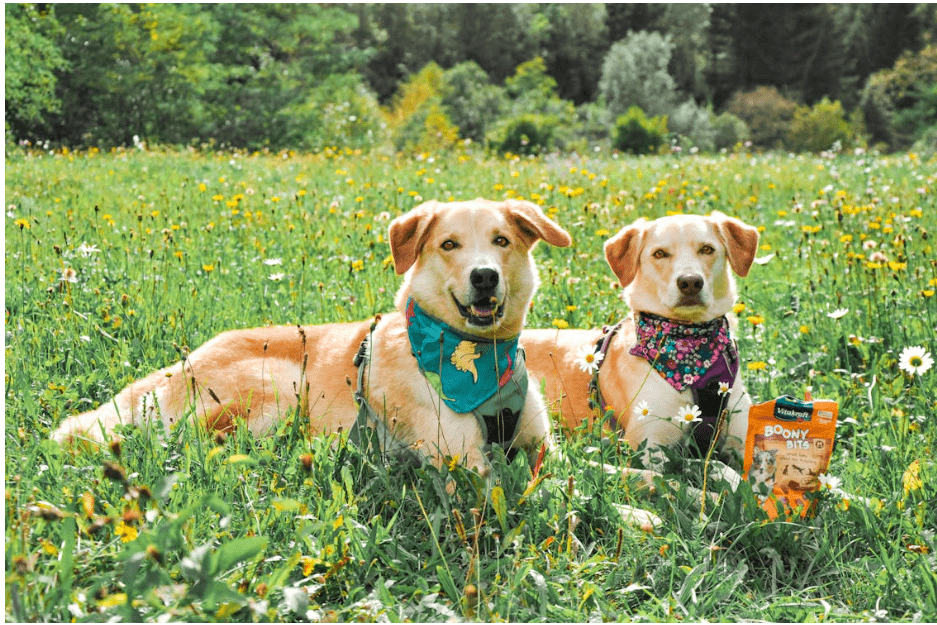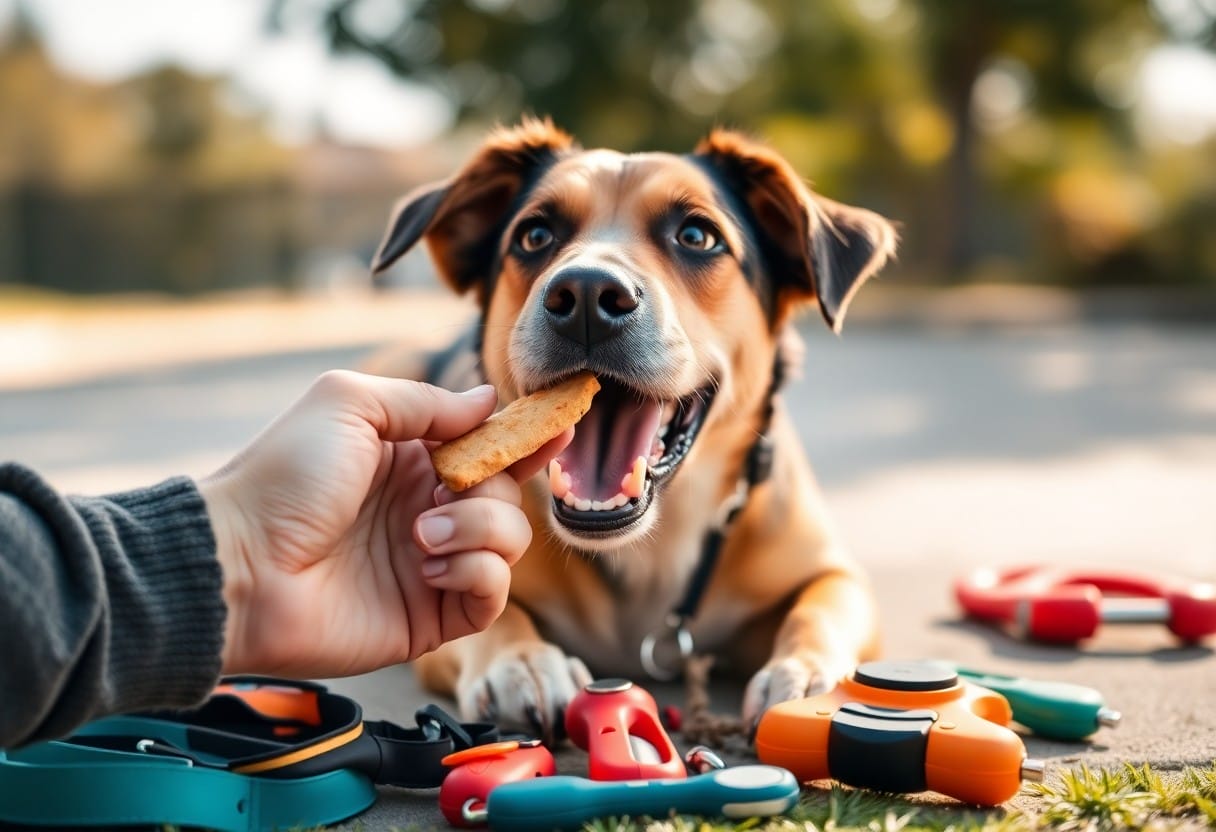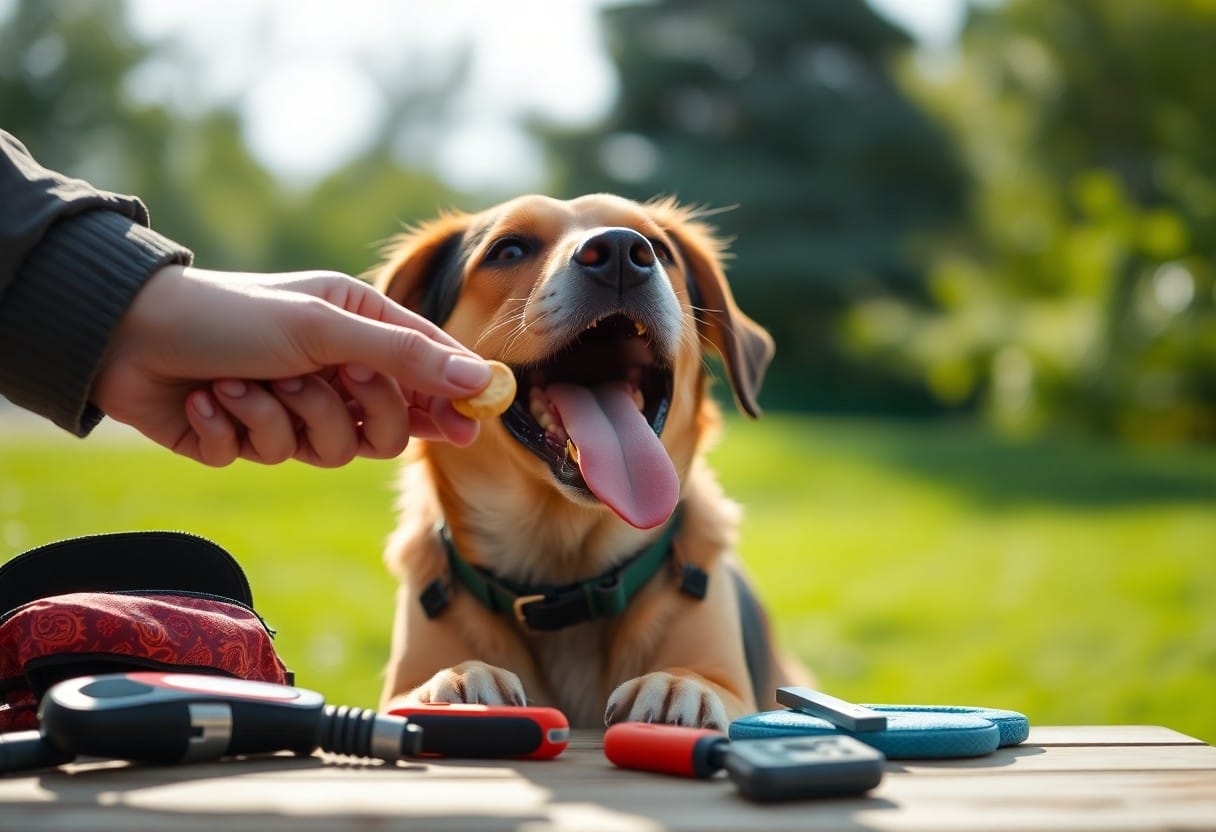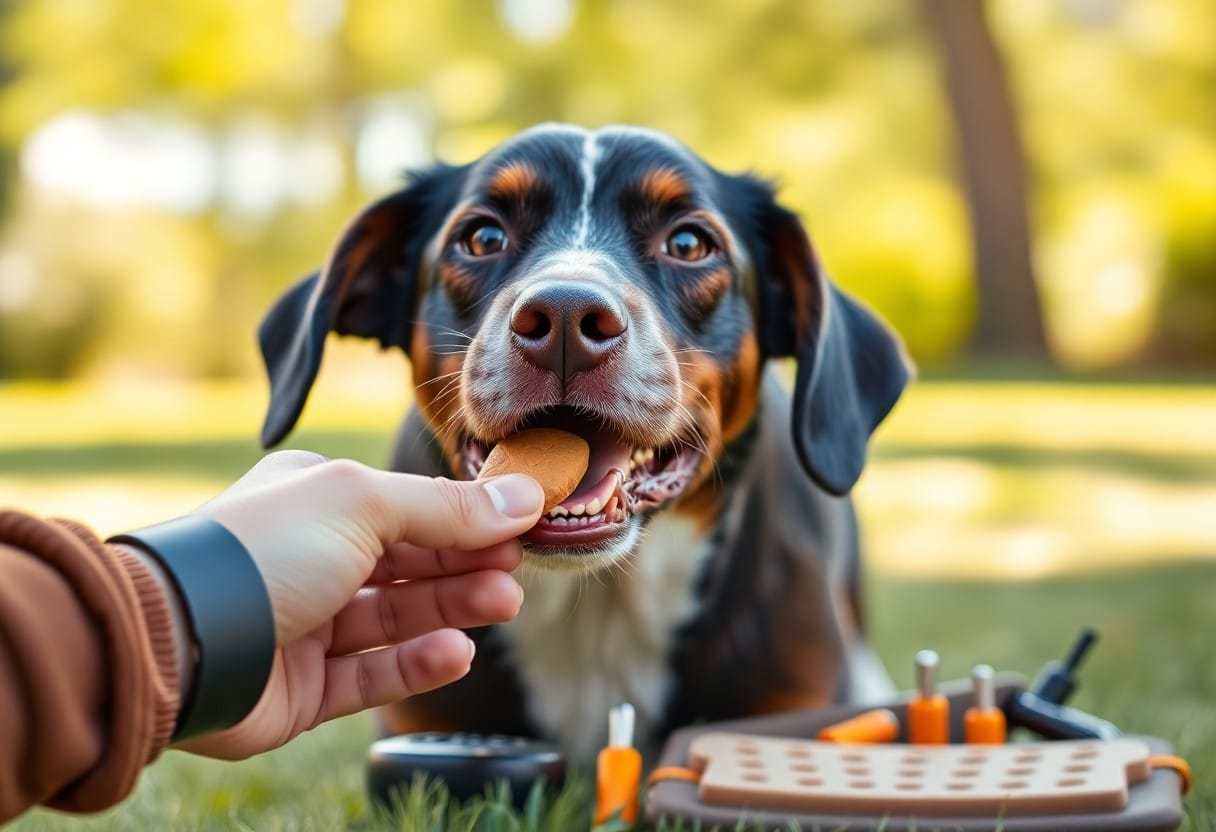
The Role of Treats in Positive Dog Training
Share
It's important to understand the significance of using treats in positive dog training. Treats serve as powerful reinforcers that encourage your dog to repeat desirable behaviors. When you reward your dog with something tasty, you create a positive association that strengthens their learning process. This method not only boosts your dog's morale but also enhances your bond by making training enjoyable. However, it's important to choose treats wisely—opt for healthy options and be mindful of portion sizes to prevent obesity and unhealthy habits in your furry companion.
Key Takeaways:
- Incentive for Behavior: Treats serve as a powerful motivator for dogs during training, reinforcing desired behaviors and helping them learn faster.
- Positive Association: Using treats in training fosters a positive emotional connection between the dog and the trainer, making the learning process more enjoyable for both.
- Adjusting Value: The value of treats can be modified based on the complexity of the behavior being taught; higher-value treats may be used for more challenging tasks.

Understanding Positive Reinforcement
While training your dog, it's necessary to understand the principle of positive reinforcement, which relies on rewarding desired behaviors to encourage their repetition. This approach not only helps in establishing a strong bond between you and your canine companion but also fosters a sense of trust and cooperation. By utilizing treats and other rewards effectively, you facilitate an environment where your dog is motivated to learn and engage with you. This method is particularly effective because it shifts the focus from punishment and negativity to encouragement and positivity.
Definition and Importance
One of the fundamental concepts in dog training is positive reinforcement, which refers to the practice of reinforcing a specific behavior by following it with a reward. This can be anything from a tasty treat, a favorite toy, or verbal praise, all of which serve to make the behavior more appealing and likely to be repeated. The importance of positive reinforcement in training cannot be overstated, as it leads to not just obedient behavior, but also a happier, more confident dog. By rewarding your dog for good behavior, you cultivate an atmosphere of positivity, making training sessions enjoyable for both of you.
Scientific Basis of Positive Reinforcement
Above all, the effectiveness of positive reinforcement is supported by scientific research that highlights how rewards can influence behavior. Behavioral psychologists have long studied the effects of reinforcement on learning and motivation, demonstrating that animals, including dogs, are more likely to repeat actions that yield positive outcomes. This scientific basis implies that using treats as rewards stimulates the brain's pleasure centers, enhancing learning experiences and making the process of training not only effective but also engaging for your dog.
Considering the findings in behavioral science, employing positive reinforcement can yield long-lasting effects on your dog's behavior. By consistently rewarding good behavior, you not only accelerate the learning process but also help in developing a well-rounded dog. This method reduces fear and anxiety associated with training, encouraging your dog to view training as a fun and rewarding experience. Utilizing treats strategically will enable you to leverage their natural instincts to seek out rewards, ultimately strengthening your bond and achieving your training goals.

Types of Treats for Training
Some pet owners may wonder which types of treats are best suited for effective dog training. The right type of treat can significantly enhance your dog's focus and motivation during training sessions. Below is a breakdown of various treat types that you might consider:
| Treat Type | Description |
|---|---|
| Soft Treats | These are chewy and quick to consume, allowing for rapid rewards during training. |
| Crispy Treats | Crunchy treats that can be slowly enjoyed, great for longer rewards. |
| Homemade Treats | Prepared at home, these can be tailored to your dog's specific dietary needs. |
| High-Value Treats | Special occasion treats that are particularly desirable for your dog. |
| Natural Treats | Whole food options that are organic and free of artificial ingredients. |
Understanding the balance between taste and nutrition is important when selecting treats for training. Each dog may respond differently to various types of treats, which affects their training progress. Diversity can keep your dog engaged, making training sessions much more rewarding for both of you. Thou, selecting the right treats can lead to a more competent and enthusiastic learning experience for your canine companion.
Health Considerations
Types of treats can greatly impact your dog's dietary health and training performance. It's crucial to choose options that align with your dog's nutritional needs without adding unnecessary calories. Keep in mind potential allergies and sensitivities, as some dogs may react differently to certain ingredients.
If you're concerned about the overall health implications of treats, always opt for those with high-quality, natural ingredients. Watch your dog's weight and adjust their daily food intake accordingly when adding treats to their routine. This ensures that training remains a positive experience without negatively affecting your dog's health.
Large breeds like German Shepherds and Rottweilers have unique dietary needs to match their size and activity levels—discover essential diet tips in this blog on Large Breeds, Big Appetites: Diet Tips for German Shepherds and Rottweilers.
Choosing the Right Treat for Your Dog
Any training treat you choose should align with your dog's preferences and dietary restrictions. Understanding your dog's specific likes can greatly impact how effectively they engage during training sessions. It's also wise to limit high-calorie or unhealthy treats, as these can lead to weight gain or other health issues.
Choosing the right treat requires you to observe your dog's reactions to various options. Start with small, bite-sized pieces, particularly for high-energy activities. This will allow for quick rewards without overloading your dog with calories. Also, consider the treat's palatability; dogs may quickly lose interest if they don't like the flavor. Additionally, if your dog has a known sensitivity or health issue, prioritize natural ingredients and consult your vet for suggestions. With the right selection, your training toolbox can be both effective and wholesome.
Timing and Application of Treats
Unlike other training methods, incorporating treats into your dog training relies heavily on the precision of timing and the context in which you apply them. When used correctly, treats can enhance your dog's learning experience, making it crucial that you understand the nuances of their application. If you're curious about the effectiveness of using treats in training, check out this insightful thread on Should I use treats as a reward during dog training, or is there a better alternative. This can provide you with various perspectives and reinforce your understanding of how to best utilize treats for your furry friend.
When to Use Treats
About establishing a strong foundation with your dog's training, timing is everything. The *best moment* to reward your dog with a treat is immediately following a desired behavior. This reinforces the association between the action and the reward, making it more likely your dog will repeat this behavior in the future. For instance, if your dog sits on command and you immediately reward him with a treat, the connection between "sit" and the reward becomes clear.
The Role of Timing in Effective Training
Between your dog's behavior and the treat, there should be a near-instant connection. If you delay giving a treat, it can create confusion about what action your dog is being rewarded for. The moment you see your dog perform the behavior you want—be it sitting, lying down, or even coming when called—execute the reward with precision. This not only encourages the behavior to occur again but also helps solidify your dog's understanding of commands. *Immediate rewards* not only allow your dog to link the action and the treat effectively but also build your dog's confidence in you as their trainer.
Role of timing should always be a priority in your training approach. Effective timing can significantly enhance the learning process, ensuring the reward feels meaningful and relevant to your dog. Keep in mind that applying treats at the right moment, along with consistency in training, will build a strong bond between you and your dog and facilitate their learning more effectively.
Balancing Treats with Other Rewards
Incorporating Praise and Play
To successfully balance treats with other rewards, you should actively incorporate praise and play into your training sessions. While treats are an effective way to motivate your dog, combining them with verbal praise, such as excited “good boy” or “good girl” phrases, helps reinforce the behavior even further. Dogs thrive on attention and approval from their owners, so using your voice to create a positive experience can enhance their learning process. Similarly, including playtime or a favorite toy as a reward can transform training into an enjoyable game, keeping your dog engaged and eager to participate.
To maintain attention throughout your training, consider e enriching the experience by varying the types of rewards you offer. Switch between treats, praise, and play, which can keep your dog interested and responsive. In situations where treats might not be practical, such as during walks or in public spaces, being able to rely on praise or play as a reinforcement can help reinforce desired behaviors consistently.
Poodles and Doodles with sensitive stomachs need carefully chosen diets to stay happy and healthy—explore the best food options in this blog on Sensitive Stomachs: Best Food Options for Poodles and Doodles.
Transitioning from Treats to Other Reinforcements
Any successful dog trainer will tell you that transitioning from treats to other forms of reinforcement is a vital step in creating a well-rounded training regimen. Once your dog becomes accustomed to responding positively to treats, you can gradually introduce alternative rewards like praise, play, or affectionate touch. This process helps prevent your dog from becoming overly reliant on treats as their sole source of motivation, allowing for more flexibility in various situations.
At this stage, be patient and consistent. Start by offering fewer treats and pairing them with other forms of reinforcement. When your dog successfully performs a command, provide enthusiastic praise alongside a soft pat or engage them in a fun game. Over time, your dog will learn that they can receive rewards through different means, enhancing their adaptability and responsiveness in training sessions without becoming dependent on food alone.
Common Mistakes to Avoid
For successful positive dog training, being aware of common mistakes is vital to prevent hindering your dog's learning process. One mistake you want to avoid is the over-reliance on treats as a sole training method. While treats can be great rewards, your dog could develop a dependency on them, leading to situations where they only respond when food is involved.
To ensure that your dog remains responsive even when treats aren't available, it's vital to incorporate other forms of reinforcement, such as praise, petting, or playtime.
Over-Reliance on Treats
Treats serve as a valuable motivator in dog training, yet using them exclusively can create issues. Treat dependence means your dog may only perform desired behaviors in anticipation of a snack, which can limit overall training effectiveness. Instead, aim for a balance by integrating other rewards so your dog learns to respond even when treats aren't present. Engaging your dog through various forms of reinforcement helps solidify the behaviors you wish to cultivate and supports long-term success in their training journey.
Choosing Inappropriate Treats
Treats play a vital role in dog training, but selecting the wrong type can undermine your efforts. Many pet owners might opt for treats that are not appealing to their dogs or are too large, complicating training sessions. Having treats that are not only tasty but also small in size will facilitate quick rewards without disrupting the training flow. Additionally, consider the nutritional quality of the treats; high-calorie or unhealthy options might contribute to weight gain or health issues, which can affect your dog's overall well-being and responsiveness during training.
Another factor to assess is the ingredients in your treats. Choose options that are made from quality and natural ingredients, steering clear of those with artificial additives or ingredients that could cause allergies. A healthy treat not only keeps your dog motivated but also supports their overall health and keeps them active, ensuring they are in the best condition to learn and retain new skills. Always tailor your treat choices to your dog's specific preferences and dietary needs to maximize training effectiveness.

Success Stories: Treats in Action
Case Studies of Successful Training
Now, let's explore real-world examples of how treats have effectively transformed dog training experiences. Between 2018 and 2023, several case studies highlighted the benefits of using treats in training regimes. Here's a closer look at some of these success stories:
- Case Study 1: A family adopted a rescue dog that previously had difficulty with basic commands. Over a three-month period, employing positive reinforcement with treats resulted in a 70% improvement in response to commands.
- Case Study 2: An anxious Labrador was trained to socialize better with other dogs. Utilizing treats during interactions, the owner noted a reduction in anxiety levels by 50% within six weeks.
- Case Study 3: A dog trainer worked with a hyperactive terrier for eight weeks using treats for calm behavior. The result was a significant 80% decrease in jumping and barking.
Testimonials from Dog Owners
Studies indicate that the use of treats not only aids in effective training but also strengthens the bond between you and your dog. To illustrate this, dog owners have shared their experiences, highlighting transformative outcomes achieved through positive reinforcement. Many shared that their dogs exhibited more focus and enthusiasm during training sessions, attributing this to the motivational power of treats.
To further emphasize this point, owners noted specific improvements in their dogs' behavior: increased obedience during walks, decreased anxiety in social settings, and a noticeable enhancement in overall happiness. They also reported that the positive atmosphere created during training sessions made their dogs eager to learn, effectively turning training into a fun bonding experience rather than a chore. Ultimately, the feedback indicates that using treats as part of your training toolkit can lead to profound and lasting behavioral enhancements for your furry companion.
Final Words
With these considerations, it's clear that treats play a significant role in positive dog training. By using treats effectively, you can reinforce desired behaviors and create a bond of trust and mutual respect with your dog. These rewards serve not just as incentives but also as valuable tools in shaping your dog's behavior and enhancing their learning experience. As you explore different types of treats, consider factors such as your dog's individual preferences, dietary needs, and the specific behaviors you wish to reinforce to optimize the training process.
Your approach to implementing treats should be balanced and mindful, ensuring that they complement your overall training strategy. By maintaining a consistent routine and being aware of the timing and type of treats you offer, you are setting your dog up for success. Embracing this positive reinforcement method will not only facilitate better learning but also enrich the bond between you and your furry companion, leading to a more harmonious relationship in the long run.
Frequently Asked Questions
What are the benefits of using treats in positive dog training?
A: Treats provide a strong motivational tool for dogs, enhancing their engagement and focus during training sessions. When dogs associate a specific behavior with a tasty reward, they are more likely to repeat that behavior. Additionally, treats can strengthen the bond between the dog and the trainer, as positive reinforcement fosters trust and cooperation.
How do I choose the right treats for dog training?
A: Selecting the right treats involves considering your dog's size, dietary restrictions, and preferences. Opt for small, soft, and easily digestible treats to keep the training sessions efficient and enjoyable. You might also explore low-calorie options to prevent overfeeding, especially during extensive training routines.
Can I use regular dog food as training treats?
A: Yes, using regular dog food as training treats is a viable option, particularly during home training sessions. However, it's important to ensure the food is appealing to your dog and that you adjust their overall food intake accordingly to prevent overfeeding. Choosing higher-value treats for challenging tasks can enhance motivation.
How should I incorporate treats into my dog's training routine?
A: Integrate treats into your dog's training by delivering them immediately following the desired behavior. This helps the dog make a clear connection between the action and the reward. Start with higher frequency rewards for new behaviors, then gradually reduce the frequency as the behavior becomes more established. You can also use treats intermittently to maintain motivation.
What if my dog loses interest in treats during training?
A: If your dog seems disinterested in treats, try changing the type of treats you use, switching to a different flavor or texture that may excite them. Also, consider the timing and environment of the training sessions; sometimes, distractions or lack of enthusiasm can lead to decreased interest in rewards. Finally, incorporating play or affection as a form of reward along with treats can also rejuvenate their interest.
